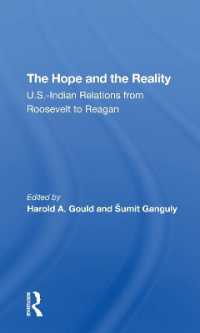- ホーム
- > 洋書
- > ドイツ書
- > Humanities, Arts & Music
- > Linguistics
- > general surveys & lexicons
Full Description
Russian-speaking immigrants residing in the Czech Republic or Germany are faced with the challenge of acquiring the Slavic (Czech) or Non-Slavic (German) language of the new environment. This process is influenced by their native language. The volume empirically analyses the acquisition of a related language compared to that of a non- or distantly related one and explores how the non-homogeneous language of the new environment - situation of diglossia in the Czech Republic, diaglossia in Germany - influences this acquisition. It additionally examines the impact of several sociolinguistic factors on L2 acquisition, especially age.
Contents
Russian-speaking immigrants - Residing in the Czech Republic or Germany - Slavic or Non-Slavic language - Acquisition of a related language compared to a non-related one - Influence of language variation in the new environment - Diglossia in the Czech Republic - Diaglossia in Germany








